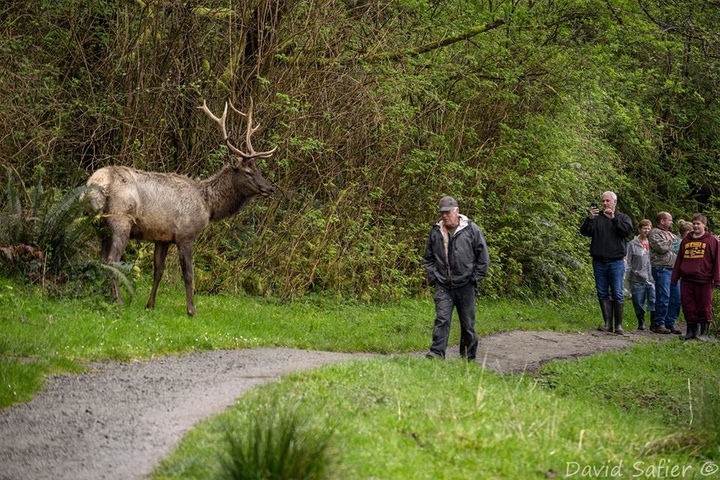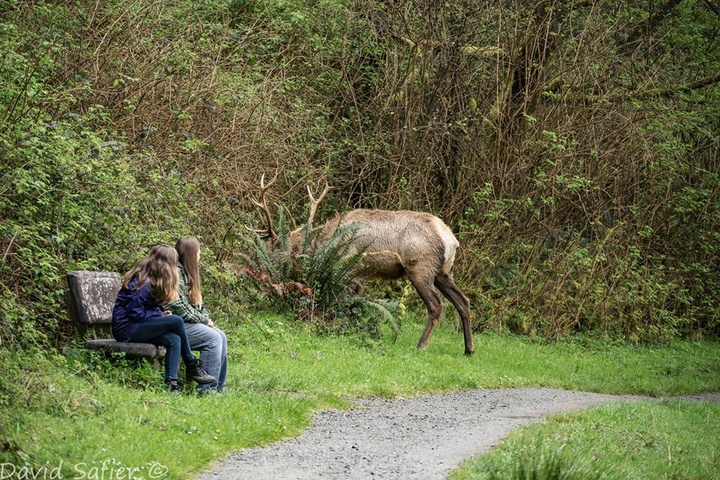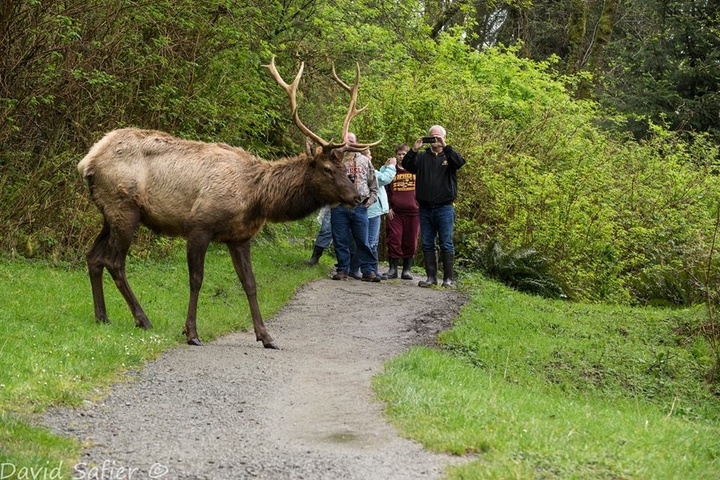
Photos taken by David Safier with a manual focus telephoto lens.
A group of sightseers wandered dangerously close to an elk bull along the Fern Canyon trail yesterday afternoon.
Local photographer David Safier captured the moment on camera and shared the photos online. One picture in particular, showing a man walking right in front of the bull, caused a bit of a hubbub in the Facebook group “Humboldt County,California in pictures,old and new.”
“The guy told me: ‘He must not like my smell, did you hear the noise he made?’” Safier wrote in the Facebook group.
While no one was maimed during the incident, Safier said the bull was grunting and showing signs of aggression.
“I thought the elk was going to ram the guy,” Safier told the Outpost today.

After spending some time perusing YouTube videos of elk head-butting people, the Outpost reached out to California Department of Fish and Wildlife spokesperson Andrew Hughan to get an obvious answer to a stupid question: Should people get this close to wild elk?
“Elk are big, strong, fast animals,” Hughan said. “It’s certainly not a good idea.”
While it’s clearly not a good idea to get within goring distance of a wild animal, the Outpost decide to call up CDFW Lt. Chris Stoots to figure out if doing so is actually illegal.
“We have a law that prohibits harassment or molestation of wildlife, but on the surface, this doesn’t meet the threshold,” Stoots said. “The language goes into anyway altering or prohibiting animals normal patterns or behaviors.”
According to California Code of Regulations subsection 251.1:
Except as otherwise authorized in these regulations or in the Fish and Game Code, no person shall harass, herd or drive any game or nongame bird or mammal or furbearing mammal. For the purposes of this section, harass is defined as an intentional act which disrupts an animal’s normal behavior patterns, which includes, but is not limited to, breeding, feeding or sheltering. This section does not apply to a landowner or tenant who drives or herds birds or mammals for the purpose of preventing damage to private or public property, including aquaculture and agriculture crops.
So, if you want to get close to a wild elk in our beautiful national and state parks and take care not to harass them in any way, you’re legally entitled to do so. But you may also be entitled to a butt full of antlers.

CLICK TO MANAGE